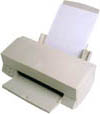The Nonessential Clause
Recognize a nonessential clause when you find one.
Every adjective clause can be either essential or nonessential. To make the distinction, you must analyze the function of that particular clause in the sentence where you found it. When an adjective clause is nonessential, it is providing information that is decorative, not defining.
Read these examples:
Mr. Dixon, who yelled because I let my dog sniff the edge of his lawn, is the neighborhood's grumpiest resident.
Mr. Dixon names a specific, unique individual. The name tells us which person on the planet we mean. As a result, the information in the adjective clause might be insightful, but it is not necessary.
Let's drive to Daytona Beach, where we can park the car right on the sand.
Daytona Beach names a unique place. This specific name means that the adjective clause where we can park the car right on the sand is decorative and thus nonessential.
William wants one of Grandma's homemade oatmeal raisin cookies, which are made with not only love but also organic ingredients—not like these tasteless store-bought hockey pucks that you brought!
Grandma's homemade oatmeal raisin cookies already has our mouths watering! The information in the adjective clause provides additional information, but we do not need it to know which cookies are under discussion.
Punctuate nonessential clauses correctly.
Because a nonessential clause is decorative rather than defining, you must separate it with commas:
My dog Lulu, who wags her tail at almost everyone, raises her hackles when she spots Mr. Dixon standing on his front porch.
Our dune buggy, which has four-wheel drive, nevertheless got stuck in the soft sand at Daytona Beach.
Grandma slapped William's hand, which was reaching for one of her freshly baked oatmeal raisin cookies.
When the clause is essential, it provides necessary description for a vague noun or pronoun. The clause thus needs no punctuation to separate it from the rest of the sentence.
Notice this difference in these rewrites:
The dog that wags its tail at almost everyone raises its hackles when it spots Mr. Dixon standing on his front porch.
A vehicle that has four-wheel drive can nevertheless get stuck in the soft sand at Daytona Beach.
Grandma will slap any hand that reaches for one of her freshly baked oatmeal raisin cookies.
Which dog? Which vehicle? Which hand? In the examples above, we need the information in the adjective clause to understand which one of many the writer means.
Nonessential clauses improve the clarity of your writing.
If you want to engage your readers, you must provide specific detail. Your words must make readers imagine situations with the same vividness that you experienced when you lived or studied them.
Take this sentence, for example:
A diner with bad manners will disgust the other people at the table.
Pretty boring, right? So let's improve the details with adjective clauses:
A diner who uses a breadstick to scratch inside his ear canal will disgust the other people who came all the way from El Paso, Texas, to celebrate Grandma's birthday.
Better. But now let's use nonessential adjective clauses:
Elwin, who used a breadstick to scratch inside his ear canal, disgusted Cousin Martha, who came all the way from El Paso, Texas, to celebrate Grandma's birthday.
Do you know Elwin and Martha? Probably not. But their specific names and the now nonessential clauses providing details about them make them real people, even for you.
Every nonessential clause means that you first chose a specific and/or proper noun. These nouns combined with nonessential clauses add such depth of detail that your readers will be right there in the scene on the page.
©1997 - 2024 by Robin
L. Simmons
All Rights Reserved.
